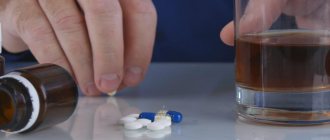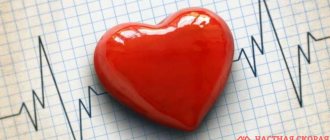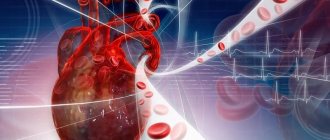The reality is that alcohol still causes a huge number of illnesses, deaths and accidents. First of all, this is due to a loyal attitude towards its use: if you say in a group of friends that you use drugs, you will receive a real portion of condemnation, although the same words about vodka will not surprise anyone.
This loyalty has developed in society due to misconceptions about alcohol. A safe dose, healthy wine and the treatment of viruses with vodka - these and other myths are long overdue for consignment to the dustbin of history.
Safe dose of alcohol
A safe and healthy dose of alcohol is 0 mg. Last year, alcohol was recognized worldwide as a neurotoxic poison, regardless of quantity.
Any amount of alcohol has a toxic effect on the brain, destroys the liver and increases the load on the cardiovascular system.
There are doses that our body can handle without consequences. Of course, if we are completely healthy.
It is approximately:
- 200–250 ml of red/white dry wine per week for women.
- 1 bottle of fortified wine 18% alcohol or 3 glasses of vodka 50 ml per week for men.
Of course, it is difficult to completely give up alcohol in the existing culture. But it seems so only at first glance. It’s worth trying to play sports, pick up interesting hobbies, improve relationships in your family and at work - you don’t want to drink alcohol when everything is good in life. Start small: don’t drink alcohol this coming weekend, then reduce the number of alcohol days to 1 per month, and gradually you will learn to have fun without alcohol.
INFLUENCE OF ALCOHOL on the occurrence of coronary heart disease
According to foreign and domestic authors, over the past decades, alcohol consumption in the European region has increased significantly, especially in our country. Numerous publications indicate the so-called “rejuvenation” of those who begin to drink alcohol and, what is more alarming, those who abuse it. This, in turn, leads not only to an increase in mental disorders, but also affects physical health, ultimately leading to a deterioration in the genetic fund of the population as a whole.
This article examines the effect of alcohol on the occurrence of cardiovascular diseases, including coronary heart disease, since these diseases are the main cause of death in all developed countries.
The connection between alcohol consumption and the occurrence of arterial hypertension (AH) has been studied quite well and is beyond doubt (Fortman SP et al., 1983; Gruchow HW et al., Alexandri A.L., 1997). It was found that individuals who consumed three or more drinks of alcohol per day (for one dose of alcohol in most foreign studies they take 10.0 g of conditional 100% ethanol) not only had higher levels of both systolic and diastolic blood pressure (SBP and DBP, respectively), but also a higher prevalence of hypertension than in individuals consuming less than 30.0 g of ethanol (Klatsky AL et al., 1977). There is no doubt that the consumption of large doses of alcohol leads not only to the occurrence of hypertension, but also to its severe complication - cerebral stroke.
The association of alcohol consumption with coronary heart disease (CHD) has been widely studied, but the results of the studies are quite contradictory. At the beginning of the century (Cabot RC, 1904), autopsies noted a lower degree of atherosclerosis in the coronary arteries among regular alcohol drinkers, but later studies did not confirm these observations (Wilens SL, 1947).
The data of modern researchers is also ambiguous. It has been established that regular alcohol consumption leads to an increase in high-density lipoprotein cholesterol (HDL-C), which has an antiatherogenic effect because it reverse transports total cholesterol from cells to the liver (Erust N. et al., 1980; Jacqueson A. et al., 1993).
According to some data, alcohol abuse leads to an increase in total triglycerides (Tg) and blood pressure, which indirectly increases the incidence of new cases of coronary artery disease.
Many authors note that in interpreting the effect of alcohol on the development of coronary artery disease, the amount of alcohol consumed is important. Moderate alcohol consumption increases HDL cholesterol in the blood and reduces the risk of developing coronary atherosclerosis (Haffner SM et al., 1985). Alcohol abuse leads to chronic liver diseases, as a result of which the receptor capacity of hepatocytes is impaired, and HDL cholesterol loses its “protective” properties.
When studying the dependence of mortality on alcohol consumption, a number of foreign authors showed that moderate alcohol consumption is associated with lower overall mortality (from all causes in general). Drinking two or fewer alcoholic drinks per day led to a reduced risk of death from coronary artery disease (Henneken CH et al., 1979). Drinking higher doses of alcohol increased the risk of death in general, including from cardiovascular disease.
| When examining the association of mortality with alcohol consumption, moderate alcohol consumption was associated with lower overall mortality (from all causes overall). Drinking two or fewer alcoholic drinks per day was associated with a reduced risk of death from coronary artery disease. Drinking higher doses of alcohol increased the risk of death, including from cardiovascular disease |
In our study, in a population of middle-aged men (40-59 years old), we studied the relationship between the frequency of alcohol consumption and the risk of death (Pavlova L. I., Chazova L. V., 1987, 1988; Kalinina A. M., 1988). The frequency of alcohol consumption was directly related to its quantity, which made it possible to take only one indicator for analysis. Perhaps this trend is a distinctive feature of the population of our country as a whole, as is the addiction to strong alcoholic beverages.
The prevalence of alcohol use in this population was 88.9%.
All individuals included in the analysis were conditionally divided into the following groups: those who do not currently drink alcohol, those who drink rarely (several times a year), moderately (once a week or less) and frequently (several times a week or daily).
It was found that risk factors for coronary heart disease, such as hypertension and smoking, are more widespread in people who frequently drink alcohol, which made it possible to classify these people as a group at increased risk of cardiovascular diseases.
A study of the dependence of mortality rates on the frequency of alcohol consumption made it possible to establish that people who frequently drink alcohol had the highest rate of not only general mortality, compared with moderate and rare drinkers (10.7; 7.2; 6.5 cases per 1000 people -years, respectively, the differences are significant), but also mortality from cardiovascular diseases (4.8; 2.6; 2.3 cases per 1000 person-years, respectively, the differences are significant). There was a trend towards a higher (by 35%) mortality from coronary heart disease in people who frequently drink alcohol compared to those who drink moderately and rarely (3.1; 2.0; 2.0 cases per 1000 person-years of observation), however the differences between these groups are not significant.
Mortality from accidents and injuries was 5.5 times higher among frequent drinkers compared to infrequent drinkers and 2.5 times higher than among moderate drinkers. A more detailed analysis of the structure of accidents that led to death made it possible to establish that in almost a quarter of them (23.2%) the direct cause of death was alcohol poisoning.
An analysis of autopsy data showed that in 53% of those who died from alcohol poisoning, death occurred with minimal changes in the coronary arteries (narrowing of less than 20%), while in those who died from acute coronary insufficiency without the presence of alcohol in the blood, in most cases (64.3%) there was place of coronary artery stenosis exceeding 50%.
Despite the fact that in people who died from alcohol poisoning, coronary artery stenosis was slightly expressed, mortality, both overall and from cardiovascular diseases, was significantly higher in people who frequently drink alcohol, which indicates a negative effect of alcohol abuse on life prognosis . Among people who frequently drink alcohol, the main causes of acute cardiovascular failure leading to death were arrhythmias, cardiomyopathies, and acute thrombosis of cerebral and coronary vessels.
An analysis by age of alcohol drinkers showed that frequent alcohol consumption leads to death at an earlier age. Such people live on average four years less compared to those who rarely drink alcohol (I emphasize that the analysis was carried out among middle-aged men).
The incidence of new cases of myocardial infarction did not differ significantly among rarely, moderately and frequently drinking alcohol. Fatal myocardial infarction occurred more often in people who frequently consumed alcohol.
The incidence of new cases of cerebral stroke was 40% higher in frequent alcohol drinkers compared to infrequent drinkers. Among those who rarely drink alcohol, not a single case of fatal cerebral stroke has been reported.
Despite the absence of significant differences between the groups in the incidence of new cases of myocardial infarction and cerebral stroke, the mortality rate from these diseases in the group of frequent alcohol drinkers was 52.6 and 40.0%, respectively, while among rare drinkers it was 38.2 and 26. 0%, among moderate alcohol drinkers - 35.5 and 16%.
Thus, the data presented indicate that such a behavioral habit as frequent alcohol consumption has an unfavorable prognosis and increases the risk of death from a number of causes, but primarily from cardiovascular diseases, injuries and accidents.
The main task of the attending physician is to convince the patient to stop frequent drinking of excessive doses of alcohol. This is especially true for people prone to high blood pressure. In patients already suffering from arterial hypertension or having clinical manifestations of coronary artery disease, sometimes even moderate doses of alcohol can lead to a tragic outcome. Unfortunately, this task is extremely difficult, and patients, as a rule, reduce the frequency and dose of alcohol, and sometimes even give it up completely, when they are already seriously ill.
Of course, awareness of the need for a healthy lifestyle should be instilled from childhood, and there is hope that the new generation will accept this ideology.
Doctors' opinions on alcohol
If previously the belief about the benefits of a glass of wine and a glass of vodka was popular among doctors, now everyone is actively disowning these beliefs. Recent scientific studies have proven 100% negative effects of alcohol on the body. Today, the safest and healthiest solution is to give up alcoholic beverages or reduce them in your diet to a minimum.
There is not a single medical recommendation on alcohol consumption in the world. No disease can be cured or prevented by this dangerous substance. The heart and blood vessels should be treated with medications and physical activity, and flu and coronavirus should be prevented by vaccination.
Alcoholism is a serious disease that destroys a person both physically and socially. It always starts with “safe” doses—a glass of wine on Friday night, a can of beer after work—and ends with dire consequences. Control yourself and try to limit your drinking to holidays and special events.
Take care of your health!
Alcohol after myocardial infarction
A huge amount of research has been conducted on the topic of whether it is possible to drink alcohol after a heart attack and coronary stenting. One of the largest - back in the last century. It involved men who had suffered a myocardial infarction and coronary stenting surgery. The best survival rate was shown by the group of subjects who drank alcohol daily, but in small quantities. It has been calculated that the risk of death in men from another myocardial infarction in the next four years is thirty-two percent lower among those who regularly drink small amounts of alcohol, compared with men who do not drink.
A similar study was conducted in America. It involved 7,500 men who had suffered a myocardial infarction and coronary stenting. According to the results, the risk of developing coronary heart disease in people who drink moderately is thirty-eight percent less than in those who do not drink at all. The highest mortality rate was among men who had previously consumed alcohol but decided to quit drinking after suffering from an illness. This can be explained by the development of signs of withdrawal syndrome in them, which is quite difficult for the body to tolerate.
Moderate alcohol consumption makes coronary stent surgery more effective. Among men who did not drink alcohol after balloon angioplasty, restenosis (repeated narrowing of the vessel) and thrombosis were much more common. It was non-drinking men who had to undergo stenting surgery most often. This fact can be explained by the fact that a small amount of ethanol has a beneficial effect on the blood.
In addition, experiments on laboratory animals have shown that taking small doses of alcohol promotes a gentler restoration of blood flow (this is explained by the effect of ethanol on oxidative processes in cells).
The style of drinking is of great importance. The same amount can be spread over a week, or you can drink it at once. The second type of behavior for people who have had a heart attack and stenting is unacceptable. If you have coronary heart disease, you should never drink large amounts of alcohol at once. This creates a stressful situation for the body and excessive stress on the heart. Thus, over the past ten years, 29% of men and 8% of women who died from myocardial infarction showed signs of high blood alcohol levels.
Smoking and cardiovascular diseases
Describing the effect of nicotine on the body, pharmacologists say that the substance works at the level of the sympathetic and parasympathetic parts of the autonomic nervous system, and also has an effect on the brain. The mechanism of occurrence of CVD diseases is associated with an increase in the load on the heart, changes in the condition of blood vessels and blood composition.
Effects of smoking
The autonomic nervous system controls the functioning of internal organs and blood vessels through biologically active substances-mediators. The mediator of the parasympathetic system is acetylcholine. Nicotine binds to nicotinic cholinergic receptors. Blood pressure decreases, pulse slows and peripheral vessels dilate.
In the sympathetic department, nicotine works with adrenergic receptors, so the effect of smoking resembles the effect of adrenaline: the pulse quickens, blood pressure rises, the breakdown of glycogen is activated, fats - glucose and lipids enter the blood. The effect of nicotine on the brain occurs through a special group of H-cholinergic receptors responsible for the release of glutamate, GABA and dopamine.
Pronounced vegetative reactions: dizziness, a feeling of “acceleration” of the pulse, then alternating relaxation and a feeling of composure, mobilization, relieving anxiety indicate that nicotine is working. He works and convinces the addict: “Smoke more. Just keep doing it and think that you can handle everything. And I will increase your blood pressure, saturate your blood with cholesterol and convince you that it is impossible to quit.” What do the heart and blood vessels of a smoker experience?
Damage to the cardiovascular system
So, nicotine binds to the receptors of the sympathetic nervous system. The arteries narrow, the heart begins to work with redoubled force, pushing blood through vessels of smaller cross-section. Pulse and blood pressure rise. The heart is constantly working under overload conditions. Even in a state of rest, when a person should neither run nor make important decisions. Regular smoking actually constantly “keeps” blood vessels in a spasmodic state. Physical exercise tolerance deteriorates.
Nicotine also disrupts the mechanism of artery relaxation after contraction. It reduces prostacyclin levels. All tissues of a smoker suffer from hypoxia.
High concentrations of lipids and destruction of endothelial cells (inner layer) of blood vessels lead to the formation and rupture of cholesterol plaques. But nicotine “does not stop there”: the risk of atherosclerosis increases, the composition and speed of blood movement changes. It becomes thicker, and “congestion” of platelets forms in small vessels. Clots adhere to lesions in the endothelium. Blood clots form.
A smoker's risk of dying from a heart attack increases by 100%. Without parting with a cigarette, a person can “earn” hypertension, heart attack or stroke, atherosclerosis, and gangrene. In addition, nicotine speeds up metabolism by an average of 20%. This means that the medications that a person is already taking to treat CVD are eliminated from the body much faster, requiring an increase in dosage.
WHO experts say that 20 cigarettes a day increases the risk of death by 4 times.











